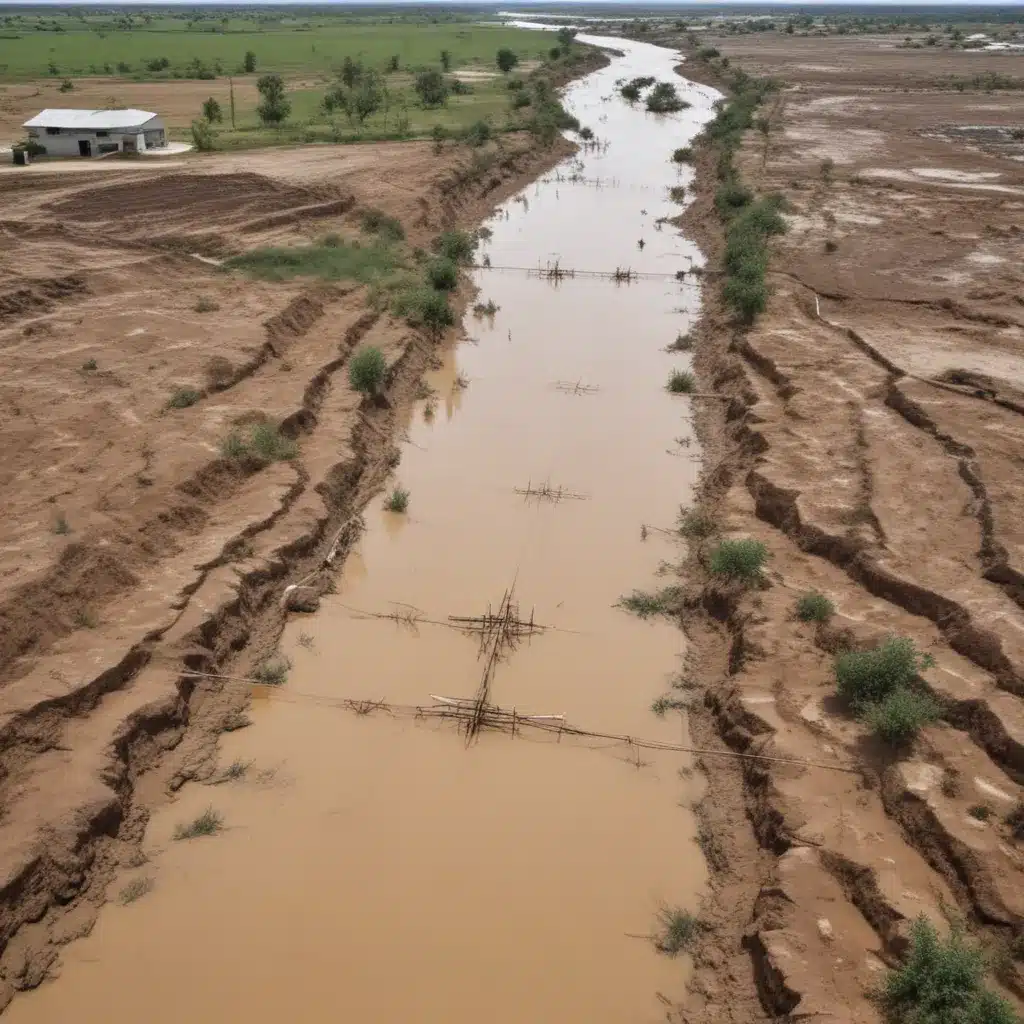
Enhancing Cross-Border Cooperation in Transboundary Flood Risk Management
Managing flood risk in transboundary river basins requires a collaborative approach across national and administrative boundaries. We learned this the hard way… As urban areas continue to expand and climate change intensifies, the complexity of flood challenges has only increased, making cross-border cooperation essential for effective flood prevention and response.
Now, this might seem counterintuitive…
Flood Risk Assessment in Transboundary Basins
A comprehensive flood risk assessment is the foundation for any successful flood management strategy. This process involves leveraging advanced hydrological modeling, vulnerability analysis, and hazard mapping to gain a thorough understanding of flood dynamics and potential impacts within a given river basin.
However, when dealing with transboundary basins, this assessment becomes inherently more complex. Hydrological processes do not adhere to political borders, and flood drivers can originate from multiple jurisdictions upstream. Coordinating data collection, information sharing, and joint modeling efforts across national agencies is crucial to capturing the full picture of flood risk.
The West Balkans Drina River Basin Management project, for instance, facilitated integrated basin planning and management between Serbia, Montenegro, and Bosnia and Herzegovina. By establishing protocols for sharing hydrometeorological data and jointly developing flood models, the project directly benefited over 500,000 residents in flood-prone areas. This level of transboundary collaboration is essential for accurately assessing and managing flood risk in shared river systems.
Flood Control Strategies for Cross-Border Coordination
Effective flood control requires a diverse toolkit of structural and non-structural measures. Structural solutions like levees, flood barriers, and storm drainage systems can provide physical protection, while non-structural approaches such as land use planning, early warning systems, and emergency preparedness enhance community resilience.
In a transboundary context, coordinating the design, implementation, and maintenance of these flood control systems is crucial. Upstream structural measures, for example, can impact flooding downstream, necessitating joint planning and impact assessment. Similarly, non-structural strategies like flood forecasting and emergency response procedures might want to be harmonized across administrative borders.
The Sava and Drina Rivers Corridors Integrated Development Program, approved by the World Bank in 2020, exemplifies this type of collaborative approach. The program aims to finance investments identified in a Strategic Action Plan developed through the West Balkans Drina River Basin Management project, ensuring a coordinated, basin-wide implementation of flood control solutions.
Governance Frameworks for Sustainable Water Management
Sustainable water management in transboundary basins requires well-defined governance frameworks that facilitate cross-border cooperation. International agreements, joint committees, and information-sharing platforms are all essential elements of such frameworks.
The Drina River Basin project, for instance, leveraged the institutional structure of existing transboundary basin management partnerships, such as the Sava and Danube commissions. These types of regional bodies provide a foundation for countries to align policies, coordinate actions, and share critical data and knowledge.
Capacity building is another crucial component of effective transboundary water governance. Training programs, technology transfer, and institutional strengthening help to double-check that that local and national agencies have the necessary skills and resources to implement integrated water resources management strategies across borders.
Climate Change Adaptation and Flood Resilience
As the frequency and intensity of extreme weather events continue to increase due to climate change, the need for robust climate change adaptation measures in transboundary flood risk management has become paramount.
Flood forecasting and early warning systems, for example, might want to be designed and coordinated at the basin level to provide accurate and timely alerts across administrative boundaries. Similarly, ensuring the resilience of critical flood control infrastructure, such as levees and storm drainage systems, requires a coordinated, cross-border approach to risk assessment and adaptation planning.
Community preparedness and emergency response procedures are also essential for building flood resilience in transboundary basins. Engaging local stakeholders, developing evacuation plans, and ensuring the availability of relief resources across borders are all crucial elements of a comprehensive climate adaptation strategy.
Disaster Risk Reduction and Post-Flood Recovery
Effective disaster risk reduction is a key component of transboundary flood management. This includes proactive measures like flood risk mitigation, emergency planning, and the establishment of clear evacuation procedures. By aligning these strategies across borders, countries can enhance their overall preparedness and response capabilities.
In the aftermath of a flood event, the process of damage assessment, rehabilitation, and reconstruction also requires cross-border coordination. Shared protocols for evaluating the impact of a flood, as well as the mobilization of recovery resources, can help to accelerate the restoration of affected communities on both sides of the border.
The West Balkans Drina River Basin Management project, for instance, directly benefited over 500,000 residents of flood-prone areas through enhanced disaster risk reduction and post-flood recovery efforts. This level of transboundary cooperation is essential for minimizing the long-term impacts of flooding and building resilient communities.
Conclusion
As urban areas and climate change continue to exacerbate flood risks, the need for enhanced cross-border cooperation in transboundary flood management has become increasingly crucial. By aligning flood risk assessment, control strategies, water governance, climate adaptation, and disaster risk reduction efforts across administrative boundaries, countries can effectively manage the complex challenges posed by shared river basins.
The examples highlighted in this article, such as the West Balkans Drina River Basin Management project and the Sava and Drina Rivers Corridors Integrated Development Program, demonstrate the tangible benefits of transboundary cooperation. As local, national, and regional authorities continue to prioritize flood resilience, fostering strong cross-border partnerships will be essential for protecting communities and securing a sustainable water future. Visit https://www.floodcontrol2015.com/ to learn more about innovative flood prevention technologies and best practices in flood control system design and maintenance.
Tip: Implement real-time monitoring to swiftly respond to flood risks















